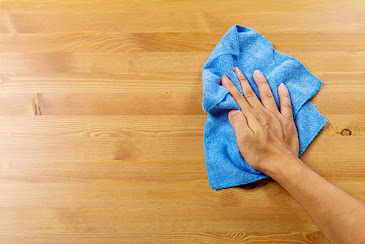How To Polish Wood Table | Natural Methods to Polish Wood Tables at Home
Natural Methods to Polish Wood Tables at Home
Keeping your wooden furniture looking beautiful while reducing your environmental impact is important to many people in today's eco-aware society. In addition to maintaining the beauty of your wood table, natural methods of polishing it at home also protect the health and safety of everyone in your household. We at https://www.furniturewiki.com/ recognise the value of sustainable living and provide you with a thorough how-to manual for polishing wood tables at home.
Evaluating Your Wooden Table
- It's important to evaluate the state of your wood table before beginning the polishing procedure. Look for any scrapes, filth, or grime on the surface. For best results, clean the table well before polishing.
Using Natural Solutions for Gentle Cleaning
- Begin by using a mild, all-natural solution to clean the wood table. Warm water and liquid castile soap or mild dish soap should be combined to create a solution. To remove any dirt or stains from the table's surface, lightly dampen a soft cloth with the solution and wipe it down.
- Use a spray bottle to combine equal parts vinegar and water to remove obstinate stains or sticky residue. After applying the solution, wait a few minutes and then use a cleansing cloth to remove any remaining residue.
Eliminating Blemishes and Scratches
- Use natural solutions like coconut or olive oil to cure blemishes or scratches on your wood table. Using a gentle cloth and a tiny bit of oil, rub the region that has been scraped in a circular manner. In addition to nourishing the wood, the natural oils also aid in hiding scratches.
- You can make a paste using baking soda and water for deeper scratches. Using a soft cloth, apply the paste to the region that has been scraped and gently rub it in. To bring back the sheen on the table, buff the surface and remove any leftover paste.
Polishing with Beeswax or Carnauba Wax
- It's time to give your wood table a flawless shine when it's spotless and clean. Beeswax and carnauba wax are two great examples of natural waxes that are great for feeding and shielding wood surfaces.
- Apply the wax to the wood by rubbing it in with a gentle cloth or sponge in a circular motion. To get a gorgeous, glossy finish, let the wax dry for a few minutes and then buff the table's surface with a fresh, dry cloth.
Maintaining the Shine
- Use a natural wood polish or conditioner on a regular basis to preserve the sheen and shield your wood table from further harm. For optimal hydration and defence, look for products with components like beeswax, citrus extracts, or jojoba oil.
- Keeping your wood table looking its best can also be accomplished by routinely dusting it with a gentle cloth or microfiber duster. Abrasive materials and strong chemical cleaners should be avoided since they can harm the wood and remove its natural oils.
DIY Wood Polish Recipes
If you would rather create your own wood polish at home, there are a number of do-it-yourself recipes that you may attempt using basic household items. To get you going, try these easy recipes:
Lemon Juice and Olive Oil Polish
- Combine In a small bowl, combine 1/4 cup olive oil and 1/4 cup lemon juice.
- Using a soft cloth, apply the mixture to your wooden table and gently rub it in in a circular motion.
- After letting the polish set for a few minutes, use a fresh, dry towel to buff the table's surface until it is glossy.
Beeswax polish with coconut oil
- Melt 1/4 cup coconut oil and 1/4 cup beeswax in a double boiler until completely melted.
- Take the mixture off of the heat and allow it to cool somewhat.
- Apply the polish to your wood table with a gentle cloth, rubbing it in with circular motions.
- After letting the polish dry for a few minutes, use a fresh, dry cloth to buff the table's surface until a lovely, natural shine is revealed.
Olive Oil and Vinegar Polish
- In a small bowl, combine equal parts vinegar and olive oil.
- Apply the mixture-dampened soft cloth to your wood table and gently rub it in.
- After letting the polish set for a few minutes, use a fresh, dry towel to buff the table's surface until it shines.
How to Maintain Your Wood Table After Polishing?
- Regular Dusting
- Utilise placemats and coasters
- Clean Up Spills Right Away
- Avoid Direct Sunlight
- Reapply Polish as Needed
- Avoid Dents and Scratches
- Frequent Inspections for Maintenance
In summary
- You can quickly and environmentally-friendly polish your wood table at home with these all-natural techniques and do-it-yourself recipes. For years to come, you may prolong the beauty and durability of your wood furniture by applying natural oils, waxes, and gentle cleansers.
- You can prolong the beauty and longevity of your wood table by adhering to the above-mentioned care and maintenance guidelines. Your table will remain a beloved piece of furniture for many generations to come with the right upkeep and care. It is the focal point of the décor in your house.




Comments
Post a Comment